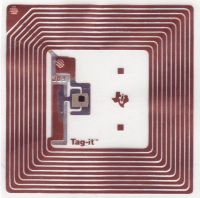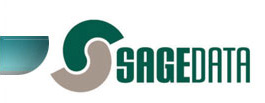
Introduction
There is a huge amount of publicity around RFID, in newspapers, magazines and the press. Some of what you read is true. Unfortunately, much of it is not. In our view, probably 10% of the stories are accurate. But even that small 10% is going to dramatically change the way we live and work. Read on...
Definition.
RFID - Radio Frequency Identification. This is a technique where a radio signal is used to interrogate and identify a small RFID tag, and, by extension, an item that the tag is attached to. Originally developed by the military to distinguish between friendly and hostile aircraft, it is now commonly used to refer to the RFID tags used to identify smaller items, commonly goods in transit, fixed assets or even file folders.
Variations of RFID Tags
RFID tags can be grouped by two characteristics, by their frequency, and whether they are active or passive.
Frequency Range
Tags can today be broken down by frequency into three categories. Tags with hese different frequencies have developed over time. in the same way that music formats have moved from vinyl to cassette to CD, so RFID tags have movced from LF to HF to UHF. Each has specific benefits and drawbacks, and chosing the "best" tag depends very much on the application.
LF RFID Tags
Low Frequency tags operate in the range 125KHz. These were the first tags to be developed, and are frequently used in animal tracking. Their physical design requires many turns of conductor to capture enough energy to respond. This tends to make them thicker, and more expensive to manufacture. Range is of the order of an inch or so. Format can be cylindrical - think of one inch cut from the end of a drinking straw.
HF RFID Tags
High Frequency RFID tags operate in the range 10-15 MHz. These are frequently used for access controls. You may see them at your local gas pump. Less turns of conductor are required, typically fewer than twenty, so these tags are often manufactured using the same techniques that were developed for printing wiring boards. A typical design is shown here. These tags are thinner, but typically occupy a similar surface area to a credit card, though smaller button versions are available.
Read range is typically up to twelve inches. Applications include shelf readers - which can give you a real time view of your inventory.
UHF RFID Tags
Ultra High Frequency tags operate in two bands, around 900 Mhz and 2.4 GHz. These are the most recently developed tags, and are used in unit tracking and the supply chain applications.
At these frequencies, the wavelength of the transmitted signal is much shorter, so the tags use a simple antennae, and there is no longer a need for coils with multiple turns. This makes the design much simpler, though the antennae still needs to be a few inches long to give a reasonable read reliability. Often, also, the tags are encapsulated, and may be artificially thick, to enable the tag to be mounted on a metal surface. In this case the actual tag mechanism is stood off from the metal by the thickness of the tag.
Read ranges can be up to twenty feet of more, but the tags are more affected by metal or liquid. Placing your hand over a tag can reduce its readability.
These tags often have the ability to store information, typically to identify a specific item by using codes to identify company, model, and serial number.
Applications include supply chain and asset management.
Active or Passive RFID Tags
Another "division" of RFID tag types is between passive and active tags. The distinction is the source of power for the signal transmitted by the tag.
Passive RFID Tags
Passive tags have an antennae or receiving coil, which collects and stores energy transmitted by the reader. The tag then emits a short burst of energy, encoded with the critical information it is communicating.
Passive tags tend to be cheaper, smaller, and should function for decades. Range depends on frequency, and can vary from a centimeter to several meters.
Active RFID Tags
Active tags get their power from a small internal battery.
They can be read at greater distances, but they tend to be larger and more expensive. The life of an active tag is limited by the life of the battery, which generally cannot be replaced. The life of an active tag is of the order of several years, though this can be modified as the tag is set up, with speed of response being traded for battery life.
For more information, or to ask a detailed question, contact SageData
directly.

